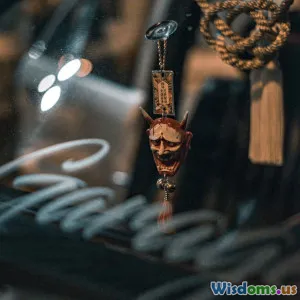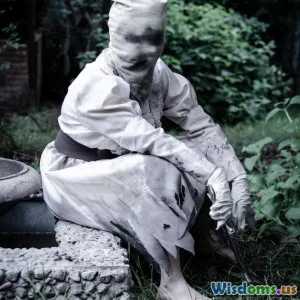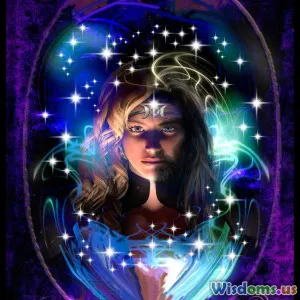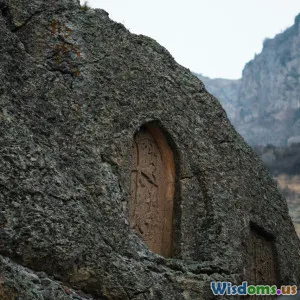
Why Sleep Paralysis Inspires Demon Folklore Everywhere
13 min read Explore how sleep paralysis fuels global demon folklore and shapes supernatural beliefs across cultures. (0 Reviews)
Why Sleep Paralysis Inspires Demon Folklore Everywhere
Sleep paralysis is a phenomenon at the crossroads of biology and folklore—an experience so uncanny that for centuries, cultures across the world have sought to explain it through the supernatural. Waking unexpectedly to find the body frozen, the room shadowed by strange shapes, crushed by an invisible weight—how could our ancestors interpret such a terrifying event? The answer lies in the persistent tales of demons and spirits that have haunted bedrooms everywhere, forming a deep link between an enigmatic sleep disorder and the most sinister stories humans tell.
The Nightmare Comes to Life

Consider an all-too-common scenario: A person wakes from sleep but cannot move. They feel an immense pressure on their chest. Around them, shadows shift and terrifying entities appear at the bedside—a witch, a demon, a ghost. From ancient times to the digital era, sleep paralysis has been described almost universally as a visitation by something evil.
This is more than a coincidence. Polled in a large-scale Italian study (2018), about 3.2% of the population reported lifetime experiences consistent with sleep paralysis—including hallucinatory encounters with malevolent figures. Similar phenomena have been recounted everywhere from Southeast Asia to Scandinavia. What's particularly fascinating isn’t just the universality of the experience, but how specifically it has inspired frightful folklore.
The medieval English called it "the Old Hag." Afro-Caribbean folk identified "The Kokma" sitting on one’s chest. Japanese victims encountered the "Kanashibari"—a sensation of being bound by dark forces. The cultural specifics vary, but the narrative nucleus—a spirit invader exploiting human vulnerability during sleep—remains uncannily stable across centuries and continents.
The Science Behind the Fear

The truly unnerving power of sleep paralysis lies not only in the body’s immobility, but in the vivid, often malignant hallucinations that so often accompany it. Neurologically, the condition is understood as a mismatch in the transition between REM sleep (when most dreaming occurs) and wakefulness. During REM, the brain effectively paralyzes the body to prevent us from acting out dreams. When this paralysis lingers as consciousness returns, a person becomes trapped in an eerie state—clear-headed, but unable to move, often beset by dream-like illusions.
Key scientific insights include:
- REM Intrusion: Dream imagery from REM can spill over into wakefulness. The result? Perfectly lifelike visions—the source material for tales of ghosts and demons.
- Chest Tightness: REM is accompanied by shallow, irregular breathing. The sensation of suffocation and chest compression supplies folklore with its telltale motif: a malign entity pressing on the sleeper’s chest.
- Fear Response: The brain’s amygdala (our fear center) activates easily under uncertainty or threat. When immobile and confused, even the subtlest shadow may morph into a demon or monster. Research suggests sleep paralysis can actually trigger panic circuits, making natural hallucinations especially menacing.
Thus, the science reveals not only why sleep paralysis is terrifying, but why it so readily lends itself to supernatural explanation.
Folklore Around the World: Sleep Demons in Every Culture

Few conditions inspire global myth-making quite like sleep paralysis. Documented tales span continents and millennia. Just a few examples:
- Europe's "Incubus and Succubus": In Medieval Europe, demonology flourished around tales of the Incubus (male) and Succubus (female) demons who visited sleepers to bedevil, seduce or smother them. These stories integrated deeply with the era’s developing ideas about witchcraft and possession.
- The "Ogun Oru" of the Yoruba: In Nigeria, people's accounts speak of being held down by supernatural beings during the night, causing distress and shortness of breath, interpreted by some as witch attacks or spirit possession.
- Vietnam's "Ma De": A nocturnal spirit believed to sit on one’s chest and suffocate the victim, echoing the same motifs as the Old Hag of Northern Europe.
- Native American Lore: The Inuit of Canada share stories of "ujaraqtuq", where a shaman or spirit immobilizes a victim during dreams.
Each region decorates the experience with local colors and traditions, but at the core remains the universal pattern: a vulnerable sleeper trapped and terrorized by inexplicable, half-seen forces—a common template dressed in local beliefs.
Artistic Echoes: How Sleep Paralysis Informed Culture and Art

The indelible imagery of sleep paralysis has found its way into countless expressions of art and literature. The most iconic is probably Henry Fuseli’s 1781 painting, "The Nightmare", which sensationally illustrates a woman draped over her bed, a demonic figure perched atop her chest, while a ghostly horse’s head emerges from darkness. Widely exhibited in late 18th-century England, the painting gave artistic credence to what was once a superstitious fear.
Gothic literature thrived on the same imagery: ghost stories by J. Sheridan Le Fanu and Edgar Allan Poe, for instance, drip with the sense of being watched or pressed upon while sleeping. Contemporary horror films, such as "Mara" (2018) and the haunting internet tales known as "creepypastas," have reimagined similar scenarios for modern audiences.
This creative connection isn’t accidental. Because the subject matter comes directly from lived (if distorted) human experience, its emotional charge endures—from Fuseli’s canvas to 2020s streaming screens.
Why Fear Stalks the Night: Psychology’s Gift to Legend

Beyond cerebral quirks lies a more profound question: Why do cultures so consistently populate the experience with demons? The answer is deeply rooted in psychology. Humans evolved a sensitivity to threats hidden in nighttime darkness—a primed fear system geared for our ancestors’ survival. In the chilly ambiguity between sleep and waking, the brain draws on this ancient playbook, conjuring foes out of imagination and fear.
A 2010 study from the University of Waterloo posited that spontaneous "shadow people" hallucinations during sleep paralysis frequently take on menacing features because human brains are evolutionarily programmed to detect predators or attackers in uncertainty. The more startling or negative the image, the faster our minds pay attention—a survival trait.
Therefore, in the absence of rational explanations—especially before modern science—paranormal attributions filled the explanatory void. Demons offered a form to the formless and lent meaning to frightening, otherwise inexplicable events.
Comparative Analysis: Demons Here, Science There

What's particularly absorbing is how different societies oscillate between supernatural and scientific interpretations as knowledge evolves. In the Middle Ages, demonic attack had near-universal assent among European physicians and clergy alike. Today, sleep experts use polysomnography to document the disorder’s physiological basis, yet the old beliefs persist.
Compare two approaches:
-
Ancient-supernatural: "A witch or spirit attacked me at night, stealing my breath." Social response: Exorcism, protective charms, storytelling.
-
Modern-medical: "REM sleep was disturbed, causing immobility and hallucination." Social response: Sleep hygiene advice, pharmaceuticals, cognitive therapy.
Interestingly, modern neuroscience doesn't always banish the ancient monster; it sometimes gives new words to old fears. A 2021 survey of patients at a London sleep clinic found that even those who understood sleep paralysis scientifically still experienced distressing hallucinations in demonic or supernatural terms. Rational knowledge can ease, but does not always erase, primeval fear.
Breaking the Spell: Navigating Sleep Paralysis Today

For many, understanding the science—and the role of culture in shaping fear—offers real solace. Recognizing that the "demons" are products of the dreaming brain can diminish terror and enable better management.
Tips to Reduce Sleep Paralysis Episodes
- Improve Sleep Hygiene: Maintain a steady schedule and create a dark, restful environment. Sleep deprivation increases the risk of episodes.
- Manage Stress: Anxiety and exhaustion heighten vulnerability. Practices like mindfulness meditation, progressive muscle relaxation, and breathing exercises can help.
- Avoid Sleeping on Your Back: Studies suggest supine position is correlated with more episodes.
- Limit Stimulants and Alcohol: These can interrupt healthy sleep cycles and lower sleep quality.
- Seek Medical Support if Needed: For chronic or disruptive cases, specialists can recommend polysomnography, therapy, and even medication.
Equally vital is the knowledge that you aren’t alone. Forums, support groups, and even narrative therapy (where sufferers retell their night-terrors in less frightening terms) offer release from isolation—and rob folklore demons of some of their power.
Why the Myths Endure

Even with scientific advances, folkloric images survive. For some, the demon at the bedside is a vestige of culture—an outdated story. For others, it's a useful metaphor for trauma: the body invaded, the will stripped away. Sometimes these stories unite communities through empathy—fear shared is fear halved.
Moreover, in a world where science and the mythic still intersect, sleep paralysis remains a potent reminder of how the border between mind and mystery, brain and legend, reality and nightmare, always blurs in the dark.
Throughout history, the story of sleep paralysis is more than just a neurobiological glitches—it’s a testament to the profound, enduring human need to name the things that scare us in the night, and to bind them, demon or otherwise, in tales as old as dreaming itself.
Rate the Post
User Reviews
Other posts in Supernatural Legends and Folklore
Popular Posts














